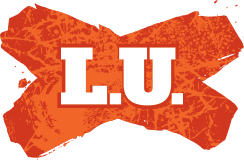WB to refresh your money whey IMG is critical to SL
Sky has now reduced the fee it pays for Super League’s domestic TV rights in two consecutive deals, taking the league’s earnings from £40m per season in 2021 to £21.5m in 2024. In short, Super League has entered a recession.
Matt Dwyer, vice-president of sports management at IMG, was heavily involved in brokering Super League’s latest deal. He says that Sky’s concerns about Super League’s lack of growth were reflected in the latest result, which saw the league’s income reduced by a further 10 per cent until the end of 2026.
“Sky said to us: ‘Look, you’ve been very steady for a long period of time and you need to be growing the fanbase.’ We need that critical mass to start moving the needle, and that takes time. That’s why this is a 12-year deal.”
Super League and IMG’s first major task is to build that critical mass beyond the faithful tens of thousands that attend matches every week.
It will be done in all the ways you might expect: social media account revamps; content creation plans and pushing its star players across timelines and feeds as much as possible.
“Our priority is growing audience, attendance, but a growing number of young people are following players as opposed to clubs,” Jones explains. “We need to know what is going to entice that seven-year-old to take an interest in rugby league. Is it Wigan Warriors, or is it going to be [Wigan Warriors star] Bevan French?”
Jones and Dwyer firmly believe it will be the latter. Super League has initially focused this strategy on a small group of players and coaches, bringing their stars to other Sky- and IMG-backed properties, such as the UFC, the DP World Tour and Wimbledon, for content creation purposes.
This content is being pushed out across central and club social media accounts, which Dwyer says have seen strong aggregate increases across follower count and engagements in 2024 compared to last year.
“The challenge for us is commercialising that,” Jones says. “Ultimately, it’s great having an engaged digital audience but we need to commercialise it. There has been a focus this year with those 12 Super League clubs, with grading in mind, to go through the same [social media development] process that we went through 18 months ago.”
Commercialising Super League is a different challenge for IMG, which must treat the property in a very different way to some of its other rights-holder partners.
The average fan of Wimbledon and The Open – IMG’s longest-standing rights-holder partnerships – tends to have far more disposable income than the average Super League fan. Rugby league is a predominantly working-class sport in England, with top teams based in some of the country’s poorest communities.
This is not lost on Dwyer or Jones, who know that Super League’s place in a family’s weekly budget is not to be taken for granted.
“We have an incredibly passionate fanbase and I think that as long as we give them the best possible product and the best sporting experience they can possibly have, they will prioritise rugby league as part of their weekly spend,” Dwyer says. “That was one of the ideas behind the concept of grading: ensuring that every club is offering fans a top-level experience that represents value for money on their hard-earned pounds and pence.”
Super League will enter a new era in 2025, with a ‘grading’ system replacing promotion and relegation. The change won’t be a panacea, but RL Commercial and IMG hope it will spark life into a…

www.sportbusiness.com



